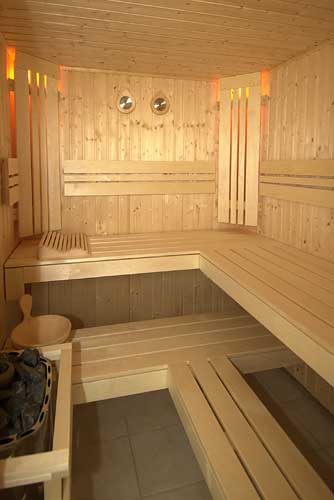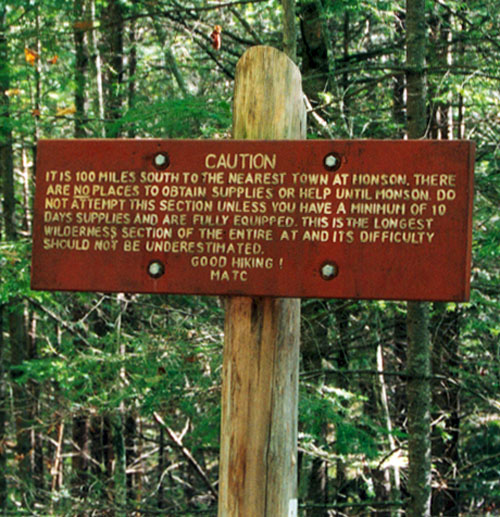|
Little Lyford Pond Camps
The Little Lyford Pond camps is a historic logging camp located in the Maine Woods. Early history The camps were opened in 1874, bordering the West Branch of the Pleasant River in northern Maine in the United States. They included a main lodge and 13 cabins as well as satellite camps for housing loggers. The camps are a 2.2 mile hike from Gulf Hagas and a 5.2 mile hike from the Appalachian Trail's famed 100-Mile Wilderness. They are located approximately east of Greenville and northwest of Brownville. Leased to private individuals 1960–2003 In 1960 Gale and Mary Torrey of Poland, Maine leased the camps and land from several paper companies. There were very few roads in the area at that time and access was via a 4-wheel drive road starting from a parking lot at Big Lyford Pond near Kokadjo and proceeding southerly along the west side of the Pleasant River. The camps were open only in the warm months and catered primarily to fly fisherman looking for brook trout. Electricity wa ... [...More Info...] [...Related Items...] OR: [Wikipedia] [Google] [Baidu] |
Logging Camp
A logging camp (or lumber camp) is a transitory work site used in the logging industry. Before the second half of the 20th century, these camps were the primary place where lumberjacks would live and work to fell trees in a particular area. Many place names (e.g. Bockman Lumber Camp, Whitestone Logging Camp, Camp Douglas) are legacies of old logging camps. Camps were often placed next to river tributaries so that the winter's log harvest could be floated to the lumbermills in the spring. Design The requirements of the logging industry involved the creation of a working site and housing from the pristine wilderness. The construction of the logging camp consisted of a transformation of the natural environment to the built environment. Logging was seasonal in nature, with farmers often working as lumberjacks during the winter. Camps were placed next to a river so that the logs harvested could be floated to the lumbermills in the spring. By their nature logging camps were temporar ... [...More Info...] [...Related Items...] OR: [Wikipedia] [Google] [Baidu] |
Moosehead Lake
Moosehead Lake is a deep, coldwater lake located in Piscataquis County in Northwestern Maine. It is the second-largest lake in New England, and the largest mountain lake in the eastern United States. Situated in the mostly undeveloped Longfellow Mountains, the lake is the source of the Kennebec River. Several rural Townships border the lake. Greenville is by far the largest town on the lake, with a small downtown area that has banks, shops, and restaurants. There are over 80 islands in the lake, the largest being Sugar Island and Deer Island to the west being the second largest. History Mount Kineo, with 700-foot (200 m) cliffs rising straight up from Moosehead Lake, has attracted visitors for centuries, from early American Indians (Red Paint People), to later tribes seeking its rhyolite to make stone tools, Penobscots and Norridgewocks, the Abenaki bands who battled here with their enemy the Mohawks, to 19th-century "rusticators" traveling by railroad and steamboat and tod ... [...More Info...] [...Related Items...] OR: [Wikipedia] [Google] [Baidu] |
Appalachian Mountain Club
Appalachian Mountain Club (AMC) is the oldest outdoor group in the United States. Created in 1876 to explore and preserve the White Mountains in New Hampshire, it has expanded throughout the northeastern U.S., with 12 chapters stretching from Maine to Washington, D.C. The AMC's 275,000 members, advocates, and supporters () mix outdoor recreation, particularly hiking and backpacking, with environmental activism. Additional activities include cross-country skiing, whitewater and flatwater canoeing and kayaking, sea kayaking, sailing, rock climbing and bicycle riding. The Club has about 2,700 volunteers, who lead roughly 7,000 trips and activities per year. The organization publishes a number of books, guides, and trail maps. History Appalachian Mountain Club was organized in 1876, incorporated in 1878, and authorized by legislative act of 1894 to hold mountain and forest lands as historic sites. The club was formed by the efforts of Massachusetts Institute of Technology Professor ... [...More Info...] [...Related Items...] OR: [Wikipedia] [Google] [Baidu] |
Sauna
A sauna (, ), or sudatory, is a small room or building designed as a place to experience dry or wet heat sessions, or an establishment with one or more of these facilities. The steam and high heat make the bathers perspire. A thermometer in a sauna is typically used to measure temperature; a hygrometer can be used to measure levels of humidity or steam. Infrared therapy is often referred to as a type of sauna, but according to the Finnish sauna organisations, infrared is not a sauna. History The oldest known saunas in Finland were made from pits dug in a slope in the ground and primarily used as dwellings in winter. The sauna featured a fireplace where stones were heated to a high temperature. Water was thrown on the hot stones to produce steam and to give a sensation of increased heat. This would raise the apparent temperature so high that people could take off their clothes. The first Finnish saunas were always of a type now called ''savusauna''; "smoke sauna". These diffe ... [...More Info...] [...Related Items...] OR: [Wikipedia] [Google] [Baidu] |
Solar Cell
A solar cell, or photovoltaic cell, is an electronic device that converts the energy of light directly into electricity by the photovoltaic effect, which is a physical and chemical phenomenon.Solar Cells chemistryexplained.com It is a form of photoelectric cell, defined as a device whose electrical characteristics, such as , , or resistance, vary when exposed to light. Individual solar cell devices are often the electrical ... [...More Info...] [...Related Items...] OR: [Wikipedia] [Google] [Baidu] |
Photovoltaic
Photovoltaics (PV) is the conversion of light into electricity using semiconducting materials that exhibit the photovoltaic effect, a phenomenon studied in physics, photochemistry, and electrochemistry. The photovoltaic effect is commercially used for electricity generation and as photosensors. A photovoltaic system employs solar modules, each comprising a number of solar cells, which generate electrical power. PV installations may be ground-mounted, rooftop-mounted, wall-mounted or floating. The mount may be fixed or use a solar tracker to follow the sun across the sky. Photovoltaic technology helps to mitigate climate change because it emits much less carbon dioxide than fossil fuels. Solar PV has specific advantages as an energy source: once installed, its operation generates no pollution and no greenhouse gas emissions, it shows scalability in respect of power needs and silicon has large availability in the Earth's crust, although other materials required in PV system man ... [...More Info...] [...Related Items...] OR: [Wikipedia] [Google] [Baidu] |
Outhouse
An outhouse is a small structure, separate from a main building, which covers a toilet. This is typically either a pit latrine or a bucket toilet, but other forms of dry toilet, dry (non-flushing) toilets may be encountered. The term may also be used to denote the toilet itself, not just the structure. Outhouses were in use in cities of Developed country, developed countries (e.g. Australia) well into the second half of the twentieth century. They are still common in rural areas and also in cities of developing countries. Outhouses that are covering pit latrines in densely populated areas can cause groundwater pollution. Increasingly, "outhouse" is used for a structure outside the main living property that is more permanent in build quality than a shed. In some localities and varieties of English, particularly outside North America, the term "outhouse" refers ''not'' to a toilet, but to outbuildings in a general sense: sheds, barns, workshops, etc. Design aspects Common ... [...More Info...] [...Related Items...] OR: [Wikipedia] [Google] [Baidu] |
Brownville, Maine
Brownville is a town in Piscataquis County, Maine, United States. The population was 1,139 at the 2020 census. The town includes the villages of Brownville, Knight's Landing and Brownville Junction, near which passes the 100-Mile Wilderness of the Appalachian Trail. History The area was a part of the Waldo Patent purchased by Moses Brown and Major Josiah Hill of Newburyport, Massachusetts, who initiated its settlement. In 1806, they built a dam and watermills on the Pleasant River. First known as township T5 R8 NWP, the community was organized in 1819 as Brownville Plantation. It was named for Francis Brown (nephew of Moses Brown), who was a mill owner and trader from Newbury, Massachusetts. In 1824, the town was incorporated as Brownville. Early settlers were given to clear and cultivate. Farms produced hay, oats, potatoes, wheat and garden vegetables. Water power from the Pleasant River attracted industry, including sawmills, clapboard mills, gristmills, a shovel handle f ... [...More Info...] [...Related Items...] OR: [Wikipedia] [Google] [Baidu] |
West Branch Pleasant River (Piscataquis River)
The West Branch Pleasant River is a U.S. Geological Survey. National Hydrography Dataset high-resolution flowline dataThe National Map accessed June 22, 2011 tributary of the Piscataquis River in Piscataquis County, Maine. From a location north of Fourth West Branch Pond () in Shawtown (Township A, Range 12, WELS), the river runs about counterclockwise around the White Cap Mountain massif, then about southeast to its confluence with the East Branch of the Pleasant River in Brownville. The Appalachian Trail crosses the West Branch () at The Hermitage Preserve in Bowdoin College Grant East (T.7 R.10 NWP). The Hermitage contains a roughly grove — one of the few stands of old-growth Eastern White Pine remaining in New England. Just upstream from The Hermitage is Gulf Hagas (), a water-formed canyon. The river falls in the canyon, including multiple waterfalls. Gulf Hagas and The Hermitage are among the 14 National Natural Landmarks in Maine, designated ... [...More Info...] [...Related Items...] OR: [Wikipedia] [Google] [Baidu] |
Greenville, Maine
: Greenville is a town in Piscataquis County, Maine, United States. The population was 1,437 at the 2020 census. The town is centered on the lower end of Moosehead Lake, the largest body of fresh water in the state. Greenville is the historic gateway to the north country and a center for outdoor recreation in the area. Greenville High School, with 89 students, was ranked as the third best high school in Maine and one of the top 1,000 in the US in 2010. History First called T9 R10 NWP (or Township 9, Range 10, North of the Waldo Patent), the land was granted about 1812 by the Massachusetts General Court to Thornton Academy in Saco. In 1824, Nathaniel Haskell of Westbrook bought the Thornton Academy Grant. With Oliver Young and John Smith, he began clearing trees that summer for farming near Wilson Pond, where the Wilson Stream would provide water power for mills. In 1827, Haskell completed a house, and his family joined him. A sawmill was built on Wilson Stream in 1829, wi ... [...More Info...] [...Related Items...] OR: [Wikipedia] [Google] [Baidu] |
100-Mile Wilderness
The Hundred-Mile Wilderness is the section of the Appalachian Trail running between Abol Bridge just south of Baxter State Park and Monson in the state of Maine. It is generally considered the wildest section of the Appalachian Trail, and one of the most challenging to navigate and traverse. This section of the trail is crossed by several logging roads and is maintained by the Maine Appalachian Trail Club. It consists of a small corridor of protected wilderness surrounded by large tracts of public and private land controlled by paper companies. An increasing amount of the adjoining lands are being protected by groups like the Appalachian Mountain Club and the Nature Conservancy. In 2000, a series of new logging roads and a marked side-trail offered hikers re-supply and lodging opportunities between miles 55 and 65 heading northbound from Monson. References See also *Maine Island Trail The Maine Island Trail is a recreational water trail that spans t ... [...More Info...] [...Related Items...] OR: [Wikipedia] [Google] [Baidu] |
.jpg)






